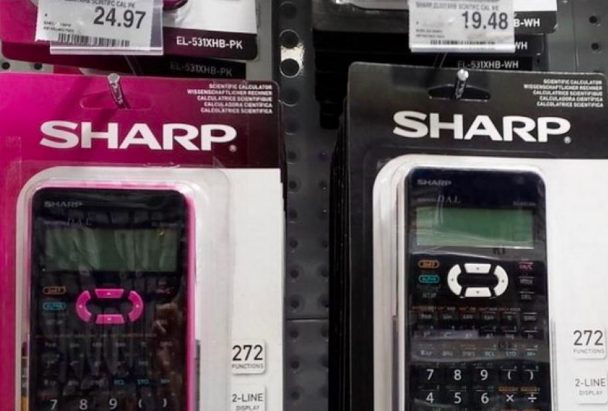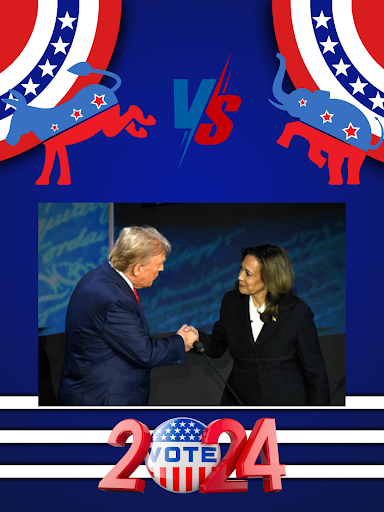Should we rethink the pink tax?
Women earn 80 cents for every dollar men do, according to the American Association of University Women. For women of color, the amount is even lower: Hispanic women earn 53 percent of what white men earn and African American women earn 61 percent. But women are not only disadvantaged when it comes to their paycheck. The pink tax, also called the women tax, refers to no actual tax but to the extra amount of money women are charged for female-specific products.
According to a study done by the New York City Department of Consumer Affairs (DCA), women pay seven percent more for toys, eight percent more on adult clothing and 13 percent more on personal care products. The lifelong effect on women is considerable and on larger purchases the difference in pricing adds up. The state of California estimated that in 1994 women paid an annual “gender tax” of $1,351 for the same products and services as men.
“People think that the pink tax isn’t that big of a deal because it’s only a few dollars, but they don’t realize that it all adds up, specifically for feminine sanitary products,” junior Tsomo Naranbayar said. “It also makes it that much more difficult for homeless women, low income families, women affected by natural disasters, etc., to access these necessary and sometimes life-threatening products.”
Despite the apparent bias of this tax, some economists find price discrimination to be efficient for companies selling products. Price discrimination refers to selling an identical product to different people at different prices. Other than the pink tax, discounts for seniors or children for specific services are examples of price discrimination that most people find harmless. For the economy, price discrimination creates more variety and therefore is theoretically beneficial – unless you are a woman.
“I’m against price discrimination, but from looking at economics companies are always going to try to make as much money as they can, that’s the type of capitalist system that we live in,” Mr. Steven Brown said.
The pink tax on certain services, such as haircuts, are logical since often women’s haircuts take longer than men’s, although this may just be a style-specific charge and the cost of these may solely depend on the type and duration of haircut received. Nevertheless, in many instances, there’s a price differential on nearly identical products despite the only difference being color. For example, a red Radio Flyer scooter marketed toward boys is $24.99, while a nearly identical pink Radio Flyer scooter marketed toward girls is $49.99.
“I think it’s ridiculous,” Tsomo Naranbayar said. “Females shouldn’t have to pay more money for products of the same use and quality. Most of the time, the only difference in the products is either the color or the packaging. It’s especially frustrating to pay more for things like hygiene care and sanitary products which we use for things we have no control over.”
The argument that contradicts the idea of a pink tax is that women are willing to pay more for the specific color or scent a product offers. This is true as a result of marketing, which is first aimed to children at a young age and directs women to buy certain female-specific products. From when they are young girls are told by society that they are meant to look a certain way; this continues throughout a woman’s life and is reinforced through marketing of female-specific products. The result is that women must pay more to fit the cultural expectations. A marketing technique that often results in female-specific products costing more is price differentiation. Price differentiation is the strategy of distinguishing a product from others through altering the packaging or color of a product. This can increase the cost of production and therefore its sale pricing. Typically price differentiation is used to target a particular group, such as women with pink razors.
“I think it speaks to a bigger problem with consumerism within the country,” Mr. Brown said. “I think it’s largely because of the way advertising and marketing have kinda been developed in this country.”
So what should women who do not want to spend an extra $3.50 on a set of razors simply because of the promise of silky smooth skin and pretty purple packaging do? They can choose to purchase its male-specific twin or to purchase from gender neutral brands such as Soapwalla, which along with being unisex is also vegan and does not test its products on animals. Another option is buying from a brand that provides female-specific razors at comparable prices to men’s such as Billie. A goal of Billie is to educate people about the pink tax and even has “The Pink Tax Rebate” which offers customers coupons when they refer their friends. They also are combating the stigma around female body hair through the social media campaign “Project Body Hair”.
The pink tax is a complicated subject, which makes it hard to find a solution for, although the simplest solution right now may be to spread consumer awareness.
“I think it would be a very hard regulation in place, I think you can try as hard as possible, but I think it comes down to marketing,” Mr. Brown said. “If there was a way to eliminate it sure, but from an economic standpoint they’re going to sell it for what people are willing to pay.”








